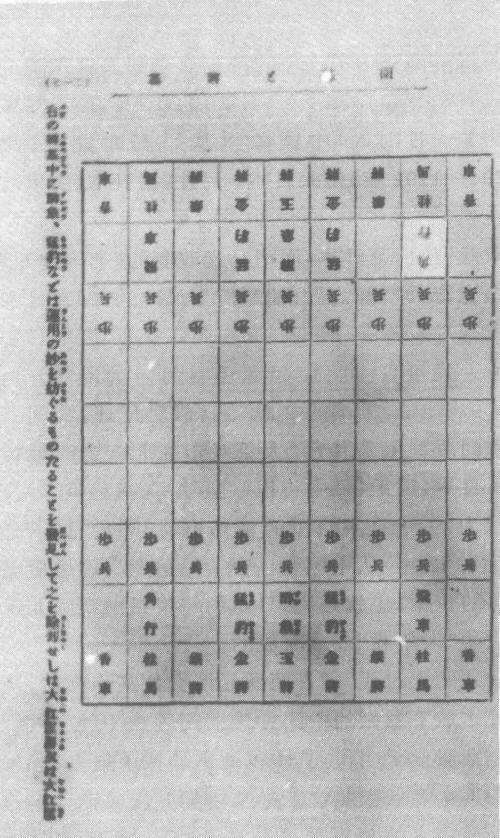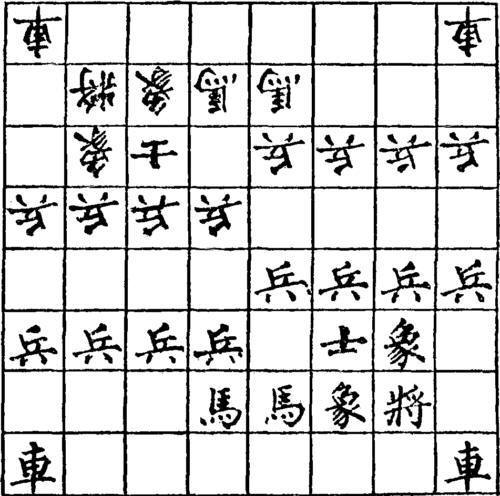Chapter 30 Section 13 The Legend of Ancient Chess
Our country has a long history and has its own excellent cultural traditions.Through exchanges with other countries in the world, my country's excellent culture has been continuously spread abroad since ancient times.In the treasure house of world culture, there are splendid cultures created by the ancient people of our country, including chess.There are ancient chess and modern chess. It has played an important role in foreign cultural exchanges. Now it has spread to many countries in the world and has become a kind of cultural and sports activities that people in these countries like.
In the middle of the 7th century AD, when Japan transitioned to a feudal system, some laws and regulations were mostly imitated from our country.In the Tang Dynasty, Japan sent envoys to China many times, and some Japanese students even studied in Tang Dynasty for decades.The elephant opera created by Emperor Wu of the Northern Zhou Dynasty was passed down to Japan in the Tang Dynasty.According to the book "Go and Shogi" published in the Meiji period of Japan (1867-1911 AD), Japanese shogi evolved from Chinese Xiangxi.According to the book "Erzhong Calendar · Boqi Calendar" in the Japanese Institutio era (AD 1086-1192), Chinese chess was introduced to Japan from the Heian period (AD 794-1192).In addition, according to the Japanese book "Go and Shogi", the "Guangxiang Opera" reformed by Chao Buzhi in the Northern Song Dynasty of my country was once spread to Japan, while the "Seven Kingdoms Opera" reformed by Sima Guang was first transmitted to North Korea, and then passed to Japan. It was spread to Japan from Korea and became popular in Japan for a while.
There is another theory about the origin of Japanese shogi.According to the Japanese document "Yantai Ji" recorded before 900, the "elephant opera" that was circulated among the people in the Northern Song Dynasty in my country was introduced to Japan in the Northern Song Dynasty.Therefore, the "Introduction to Shogi" compiled by the Japan Shogi Federation believes that the most credible basis for the exact historical data about Japanese shogi is the "Elephant Play" passed down from China in the first year of Kangji (AD 1142).In other words, Japanese shogi was transformed from the "Elephant Play" in my country's Northern Song Dynasty.
During the Song Dynasty, the economic exchanges between China and Japan were very close.There are as many as 560,000 ancient Chinese copper coins excavated from the ground in Japan, including Tang Dynasty to Ming Dynasty, among which the Northern Song Dynasty has the most coins; the famous Japanese monk Jizhao once came to China to study in the early Northern Song Dynasty.Judging from the shape of the oldest shogi in Japan, it is similar to the chess system reflected in Cheng Hao's poem "Yong Xiang Xi" in the Northern Song Dynasty.

Oldest Shogi Game Diagram Discovered in Japan
What is popular in Japan now is Zhongshogi, which is slightly modified on the basis of small shogi. The names of the game and chess pieces are the same as shogi, except that a flying car and a corner row are added to each side.In fact, this kind of shogi is a variant of Jiujiu Xiangqi at the end of the Northern Song Dynasty in my country.The modern Chinese chess set at the end of the Northern Song Dynasty and the beginning of the Southern Song Dynasty is called "Jinpeng" by the Japanese. This is influenced by the "Jinpeng Spectrum" of the Ming Dynasty, which shows that the "Jinpeng Spectrum" was also introduced to Japan.
my country and North Korea are friendly neighbors with close contacts through the ages.Our country's Go was introduced to North Korea before the Northern and Southern Dynasties.Park Qiu, a chess master from Silla, Korea, played chess in the Tang Dynasty.
Korean Chess is also known as Goryeo Chess.The moves are basically the same as modern Chinese chess, but there are four differences:
1. In addition to restricting the generals to advance and retreat within the nine palaces according to the modern Chinese chess moves, they can still move one square diagonally according to the soldiers' moves.
2. Before the game starts, the positions of the bishop and the horse can be interchanged at will.
3. Xiang and Xiang can cross the river according to Tian Zi, acting as an attack.
4. Cannons cannot eat cannons.When shooting with a cannon, if there is a cannon in the middle, it will not be able to produce the effect of beating and illuminating the general.
Judging from the chess game map of Korean chess, it is different from chess in that the general is placed in the center of the Jiugong before the game starts, which is commonly known as the position of Huaxin.
While ancient Chinese chess spread to Japan and Korea, it also spread to South Asian countries.
At present, there are many overseas Chinese and ethnic Chinese in South Asian countries, such as Vietnam, Thailand, Myanmar, Malaysia, and Indonesia, who love to play chess.In addition to modern chess, there are also ancient chess in these countries.Most of this kind of ancient chess has a blood relationship with ancient Chinese chess.For example, judging from the ancient chess game unearthed in Myanmar, it is very similar to the eight-ba chess of the Tang Dynasty in my country.

Myanmar ancient chess map

Oldest Shogi Game Diagram Discovered in Japan

Myanmar ancient chess map
